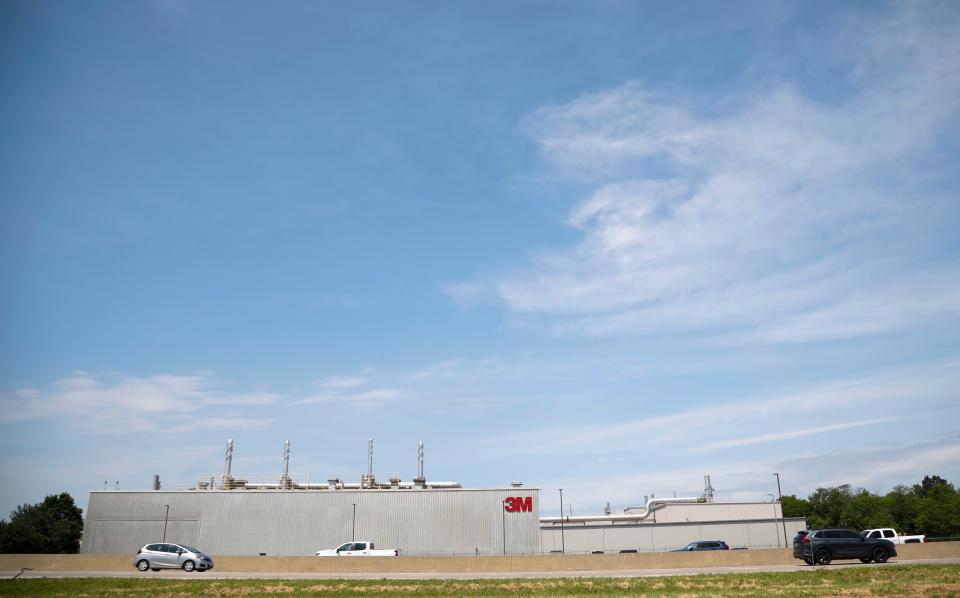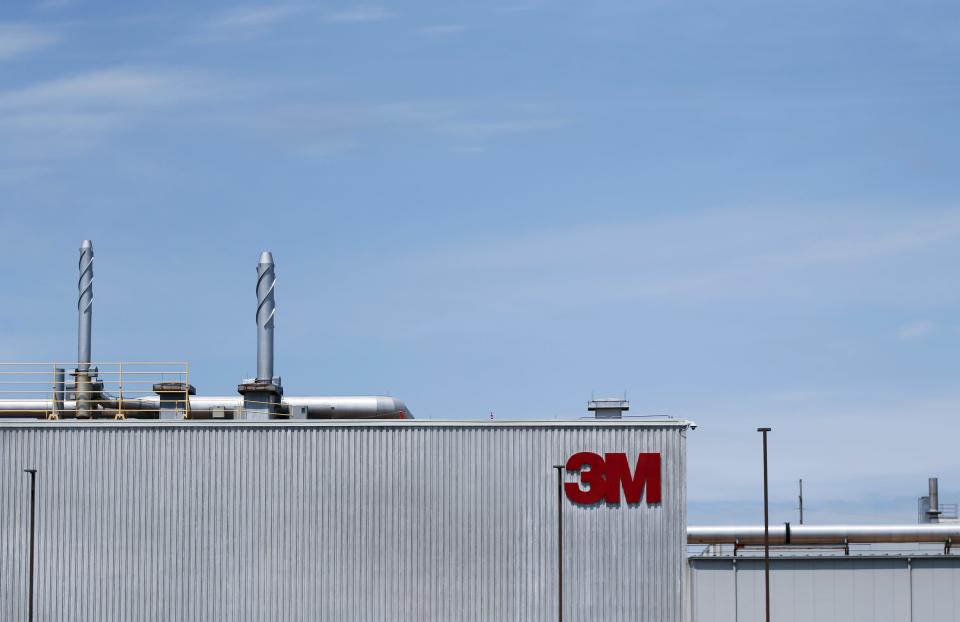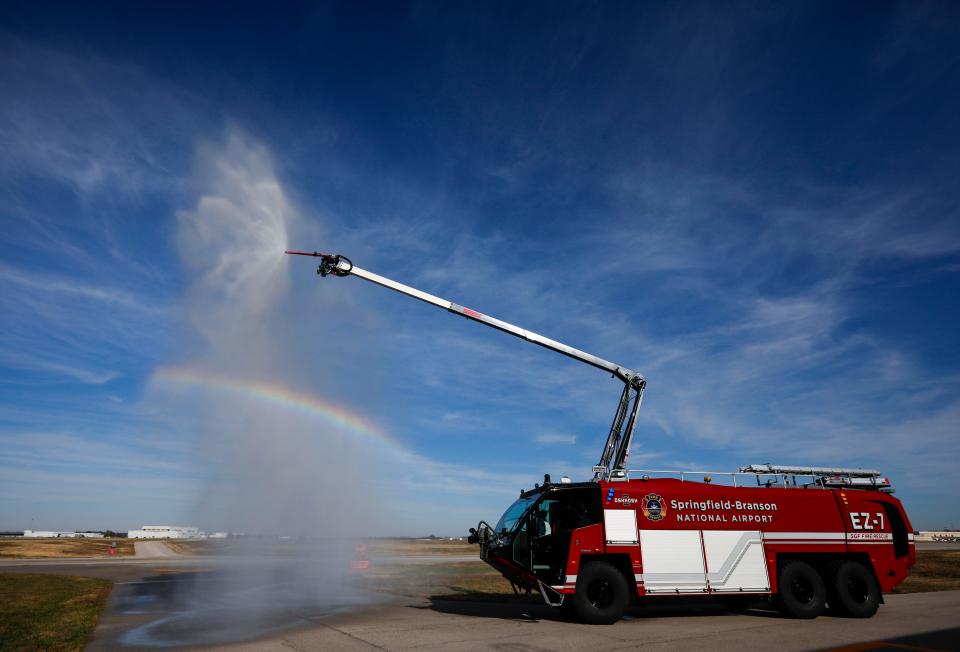Here's how Springfield agencies are handling new EPA regulations on 'forever chemicals'
In April, the U.S. Environmental Protection Agency set the first nationwide, legally enforceable regulations on PFAS, or per- and polyfluoroalkyl substances, in drinking water. Dubbed "forever chemicals," PFAS are used in a vast array of industrial processes and, by design, are durable and resistant to breaking down.
The chemicals can be found in cookware, carpets, clothing, firefighting foam and beyond. While their full impact on health is not yet known, the chemicals have been found to build up in humans and wildlife, increasing the risk of certain types of cancers and other serious health complications.
PFAS have been found here locally in Springfield much the same as in the rest of the world. With the slowly expanding knowledge and in anticipation of regulations, local entities have begun testing water sources for the compounds.
Under the new EPA rules, public water systems are required to conduct their initial monitoring by April 26, 2027, and include PFAS information in their Consumer Confidence Report, which includes a public notification process. All public water systems have to meet and comply with the newly established maximum contaminant levels by April 26, 2029, to allow for capital improvements needed to address PFAS contamination.
City Utilities battles PFAS, their source
As Springfield City Utilities began testing raw water sources, treatment plant taps and water distribution sites in November 2022, PFOS, a chemical within the PFAS umbrella, was discovered in James River. The newly finalized EPA regulations set the maximum contaminant levels for this compound and PFOA at 4 parts per trillion (ppt) but note that 0 ppt is the health-based, non-enforceable maximum contaminant level goal. CU's testing revealed PFOS concentrations in James River between 3.1 to 16 ppt. For comparison, 1 ppt is equivalent to one drop of water in 20 Olympic-size pools.
As a result of this testing, CU has limited use of James River water and instead blended it with water from Fellows Lake to stay below the 4 ppt threshold as it explores long-term options. Tap samples from March 5 showed all PFAS levels below the EPA limits, according to CU. CU Media Relations Manager Joel Alexander told the News-Leader blending is the best option available right now, while more long-term solutions, like granular activated carbon, ion exchange and reverse osmosis, are potential options being looked at by an engineering consulting firm.
Where did the PFAS come from? Well, CU is pointing the finger at Minnesota-based manufacturer 3M, which has operated a plant in Springfield making adhesive and tape since 1967. In early June, CU filed a citizen lawsuit against the company alleging it violated permit regulations and illegally dumped the chemicals that have and continue to contaminate James River. The utility asked the U.S. District Court for the Western District of Missouri Southern Division to order 3M to stop ongoing discharge of the chemicals, conduct sampling and provide adequate treatment technology to rid the city's drinking water of PFAS.

According to a statement provided by 3M to the News-Leader, the Springfield plant is not one of the five 3M sites that make PFAS as a commercial product. But the lawsuit accuses 3M of contaminating the water by dumping aqueous film-forming foam (AFFF) fire suppression system discharge on its property after annual tests it conducted. AFFF is commonly used as firefighting foam and known to contain PFAS. According to court documents, this testing and subsequent discharge of the foam was a violation of the state operating permits which lead to the chemicals contaminating the on-site stormwater retention pond and stormwater outfalls.
Due to the karst typography and a nearby sinkhole, the contamination in stormwater and groundwater on plant property flowed into James River tributaries. Jordan Creek, Pearson Creek and Jones Spring are tributaries of the James River. The plant is located approximately three miles upstream from the James River Blackman Water Treatment Plant intake. Water samples from Jones Spring collected between August 2023 and March 2024 show PFOS levels at more than 100 ppt, PFOA above 5 ppt, PFHxS above 40 ppt and PFBS at more than 20 ppt. New EPA regulations limit PFHxS levels to 10 ppt. The lawsuit notes samples of Jones Spring, Pearson Creek and James River upstream from the plant and where the creek flows into the river have not detected PFAS.
3M notified the Missouri Department of Natural Resources of the following stormwater retention pond concentration ranges in 2020: 2,000-3,000 ppt of PFOS, 400-500 ppt of PFHxS, 40-50 ppt of PFOA and 40-50 ppt of PFBS.
"We continue to work with the DNR to address the presence of certain PFAS in groundwater and stormwater at our facility in Springfield, including the installation of additional groundwater sampling wells, stormwater retention ponds and discharge treatment systems in accordance with DNR workplans," the statement read.
3M representatives noted that in 2000, the company announced manufacturing of PFOA and PFOS would be phased out worldwide. In 2022, the manufacturer also announced that all PFAS manufacturing would be phased out by the end of 2025, which representatives said is on schedule.
In response to the lawsuit filed by CU, the 3M statement notes that as the understanding of PFAS and expectations around the chemicals evolve, so do expectations of the company and their management of the substances. "3M will address PFAS litigation by defending itself in court or through negotiated resolutions, all as appropriate."

CU filed a separate lawsuit against 3M and more than 20 other PFAS manufacturers, including DuPont, for manufacturing and using PFAS in a wide range of products while knowing and hiding the risks of the chemicals from regulators and the public as part of multidistrict liability litigation on the subject. 3M and DuPont have been the leading manufacturers of PFAS.
Alexander said via email that any other possible sources of contamination are still being investigated. Systematic sampling and analysis of all of CU's water sources is still ongoing to ensure drinking water is within EPA's limits.
In the fall, Springfield Public Schools was considering putting the new Pipkin Middle School on an undeveloped parcel at 3207 E. Pythian St., next to the 3M plant. The district abandoned the plans, instead picking a spot in the Midtown neighborhood. Alexander said CU did not have any direct interaction with SPS regarding contamination in the area of the 3M plant, though he noted that with DNR being aware of the contamination, "that information would be available to any purchaser of real estate and should be disclosed by the seller."
What is the city doing?
The city's Environmental Services began sampling and testing wastewater treatment plants in November 2020 on a quarterly basis. Communications Coordinator Kristen Milam said those tests have not shown "anything that causes concern."
The department also applied for a $2.5 million grant from the DNR State Revolving Fund Emerging Contaminants Grant for a wastewater treatment technology project as a proactive measure. More information is expected to come this fall.
More recently, in 2023, the city began a process to update its Industrial User Inventory to include screening for potential sources of PFAS. Through the initiative, the city began testing businesses' wastewater discharge on a quarterly basis starting in October 2023. If a business is found to discharge significant levels of PFAS, the city will work with the business to recommend ways to minimize PFAS in the wastewater, Milam said via email. Approximately 70 locations are sampled, 56 of which are industral sites.
3M is on the list of businesses which the city is currently in the process of collecting and analyzing samples from. Milam said it will still be several months before scientifically valid results are available.
"Approved testing methods for PFAS are a relatively new technology and the laboratories and procedures have been in flux over the last year," Milam said. "Our goal is to accurately characterize the PFAS levels in various parts of our wastewater system and, in most cases, we still need additional data to draw valid scientific conclusions."
Tim Davis, environmental compliance manager at the Greene County Resource Management Department, said the county's actions are guided by the requirements of DNR's stormwater permit process, which currently include PFAS testing. Because there is still much more to learn about PFAS, including any reference points as they relate to stormwater, Davis said much more focus is currently put on drinking water that more directly exposes people to the chemicals.
What about firefighting foam?
The city's chief spokesperson, Cora Scott, said Springfield Fire Department does not use PFAS-containing AFFF foam in trainings and has not done so for more than 20 years.
While Springfield-Branson National Airport has not undergone PFAS testing, Public Information and Marketing Manager Kent Boyd said the airport is in the process of transitioning away from PFAS-containing foam. During trainings, only water is used.

Up until 2019, airports were required to test the concentration of AFFF by discharging roughly a gallon of it from the trucks annually to ensure the truck adequately mixed the foam with water. This testing is still completed but no longer requires the foam to be discharged.
More: City Utilities sues 3M for knowingly contaminating James River with 'forever chemicals'
Additionally, in late 2022, Congress directed the Federal Aviation Administration to create a transition plan to replace the PFAS-containing foam with an alternative due to the health concerns discovered. Prior to this, airports were required to use the foam in their fire trucks because the foam was found to be the most effective in putting out an aircraft fuel fire, Boyd said via email.
The airport's new truck uses new, PFAS-free foam while the old truck is expected to transition out within the year. Boyd said that the last time foam was actually used was likely in late 2010 when a twin engine airplane landed without landing gear after circling the airport to burn off fuel.
Marta Mieze covers local government at the News-Leader. Have feedback, tips or story ideas? Contact her at mmieze@news-leader.com.
This article originally appeared on Springfield News-Leader: Springfield takes steps to address PFAS, 'forever chemicals,' in water

